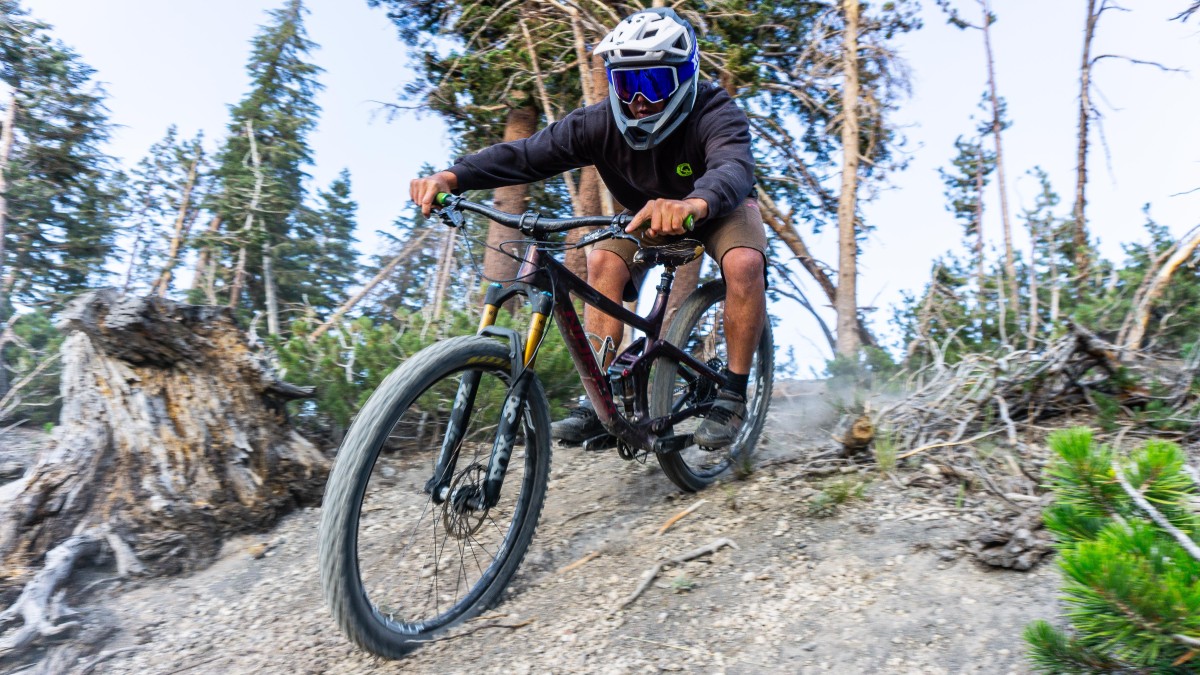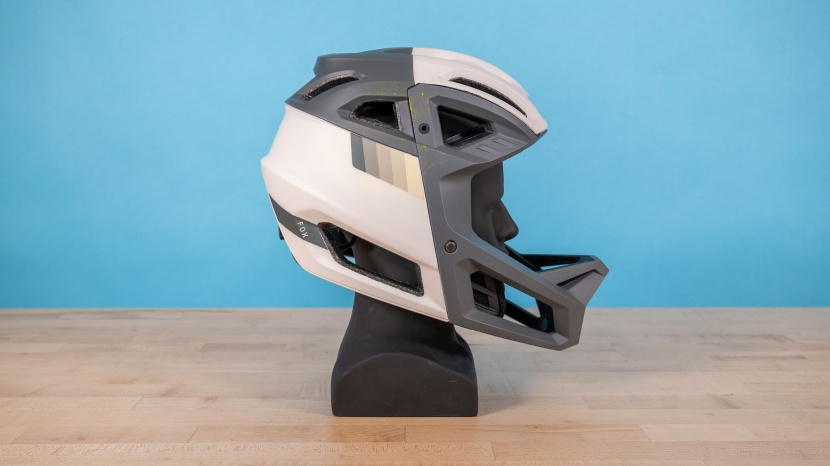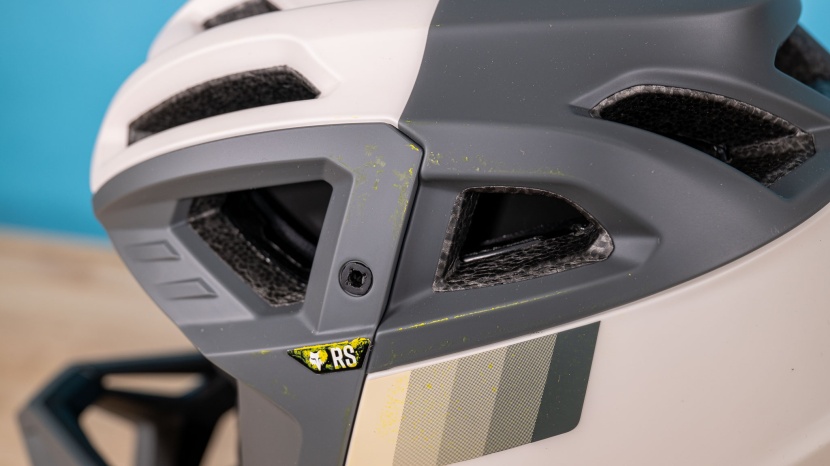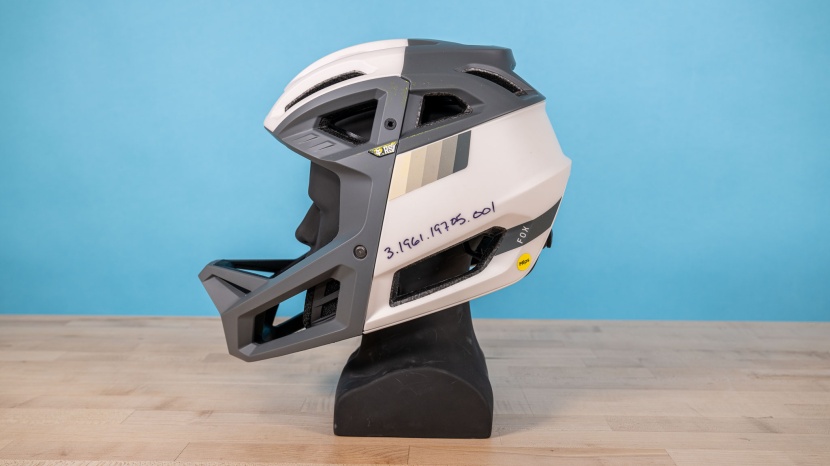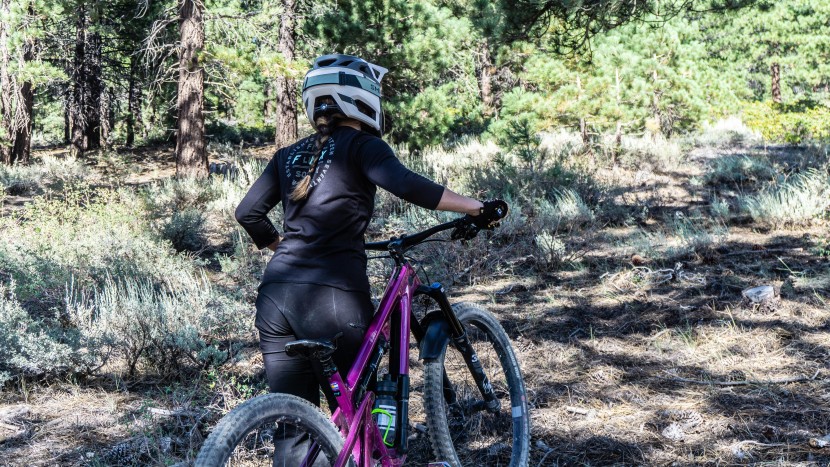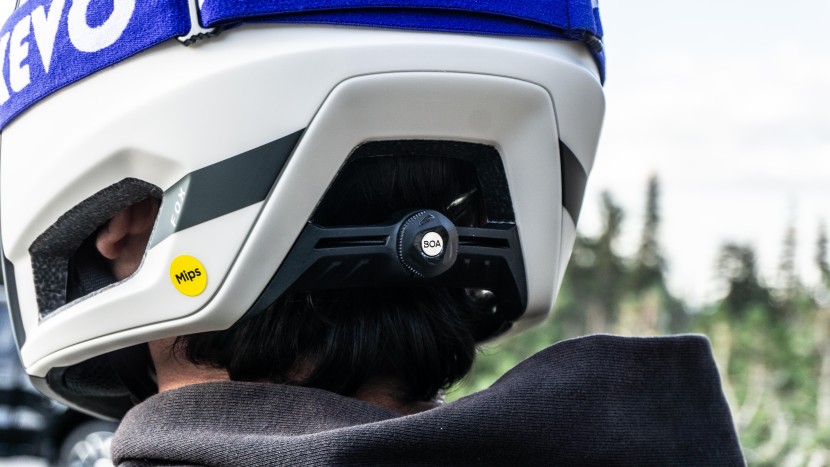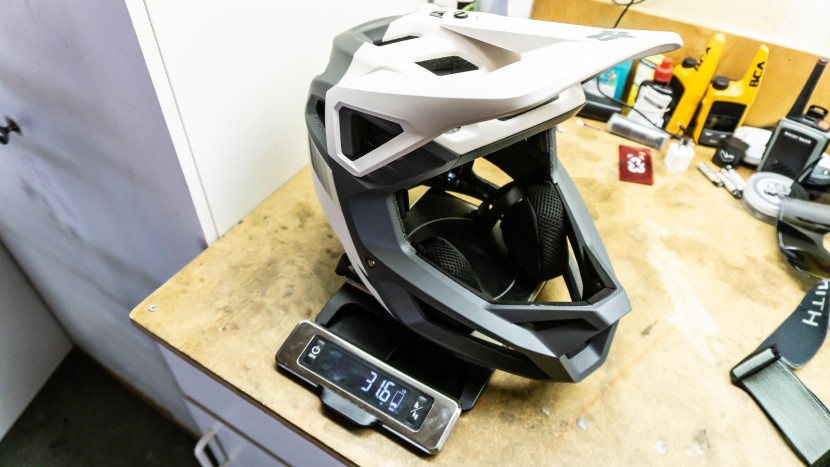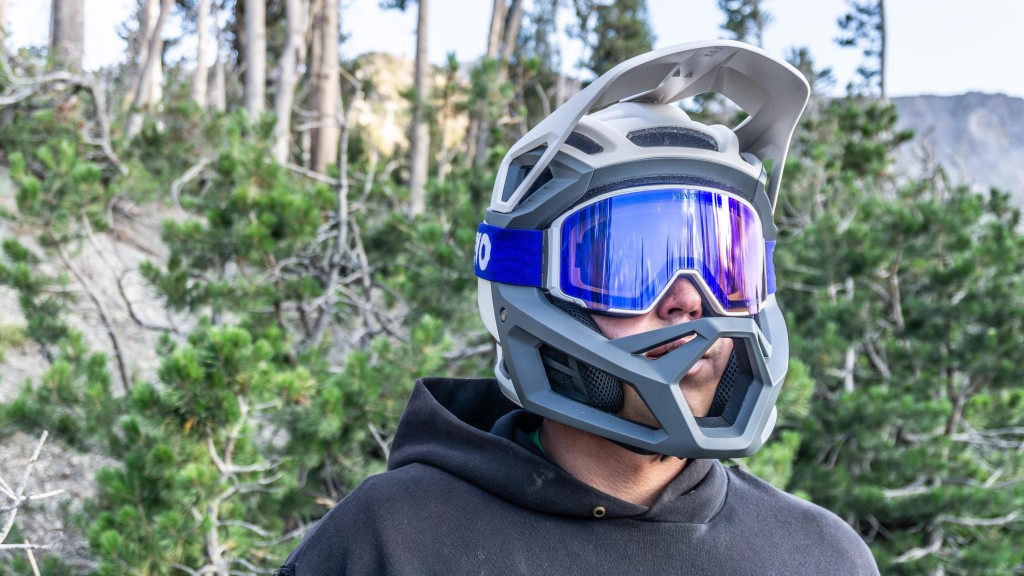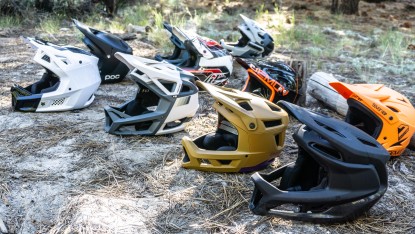
Our Verdict
Our Analysis and Test Results
The Proframe RS is a top recommendation for riders who enjoy a diverse range of experiences in the world of downhill biking. It strikes a great balance between solid protection and excellent airflow, making it perfect for pedal-intensive descents and bike park days. This helmet checks nearly all the boxes and scored really well in most performance tests.
Impact Test
While the Proframe RS is lighter weight and better vented than most in our test, it performed competitively in our impact testing. It's important to note that all of the helmets we tested should be regarded as safe. This particular helmet has several certifications, including ASTM F1952 DH certification. It is a relatively recent phenomenon to see these enduro-oriented helmets start to carry DH certifications. It also holds certifications from ASTM F2032, EN 1078:2012 + A1:2012, AS/NZS 2063-2020, and CPSC 1203. Our impact testing uncovers the particularities of performance and how each helmet scores in specialized slow and fast impact scenarios.
In the slow impact test, the Proframe RS performed slightly better than average in our test group. In high-speed impact tests, sensor data showed performance in the middle of the pack. We found this data to be impressive given the helmet's lighter weight. Notably, this helmet provided consistent protection at different impact speeds. In a typical high-speed crash, your initial impact may be most similar to our fast test, but several slower impacts usually follow it, so having solid performance in both tests bodes well.
Comfort
The Proframe RS is among the most comfortable we've tested. While it has less padding than more heavy-duty full face models, it uses an adjustable retention cradle with a BOA system, making for a fit and feel akin to a half shell model.
The Proframe has the option to adjust the entire cradle position. There are four different ways to adjust the helmet's cradle, allowing you to position it higher or lower on your head as needed. While this adjustment can be made fairly quickly, most riders will likely set it once to their preference and leave it in place. The substantial cheek pads on the chin bar provide a comfortable, secure fit by gently but firmly holding the cheeks, ensuring the helmet stays fixed without causing discomfort. The helmet fits closely with no sloppiness, so it remains stable and does not shift independently while riding.
Ventilation
Ventilation is the name of the game with the Proframe RS. The level of breathability is truly outstanding. This lid has a total of 22 vents. Despite the slight weight penalty compared to other enduro-oriented helmets, the Proframe RS breathes incredibly well.
One of the things we loved about the Proframe was its fully open chin bar vents, which have no mesh or plastic covering, allowing for increased airflow when your speed ramps up. A diamond-shaped vent sits directly in front of the mouth, flanked by large rectangular openings on both sides, with two smaller slits above for extra ventilation. Above the brow, a series of sizable intake ports draw in fresh air, while the rear houses multiple exit ports that efficiently release heat, moisture, and air, keeping you cool and comfortable throughout your ride.
Usability
During testing, we saw no signs of early wear or damage to the padding or strap materials of the Proframe. The helmet features a magnetic Fidlock closure on the chin strap, which has become increasingly popular on both half-shell and full-face helmets as an alternative to the traditional buckle. The BOA system was one of our favorite retention adjusters in the lineup, ultimately making the Proframe a tester favorite.
The Proframe RS comes with an additional set of cheek pads if you need to adjust the fit. It also comes with a very simple helmet-carrying bag. We are big fans of the three-position visor, which is reasonably broad and is approximately six inches wide at its furthest point. As a helmet on the lighter side, we found the need to be somewhat mindful of where we threw our helmets when running car shuttles or traveling to/from the bike park, but it fared better than other lightweight full face options.
Weight
The Proframe RS came in at 31.6 ounces, which is lighter than most and garnered positive tester feedback. While it isn't the lightest out there, it offers improved durability compared to other lightweight models.
The Proframe is substantially lighter than the full-blown downhill models, but can still hang at the bike park. Sure, it shouldn't be thrown on the ground or carelessly tossed in a truck bed repeatedly, but with a bit of caution, this lighter-weight model can still last you a long time.
Should You Buy the Fox Racing Proframe RS?
This is one of our favorite do-it-all helmets, boasting a more robust construction than its featherweight competitors. If you want something that you can pedal and log some time with in the bike park, we strongly recommend you consider the Proframe.
What Other Full Face Helmets Should You Consider?
If you're going to do more enduro pedaling than park laps, check out the Specialized Gambit, which has even less padding than the Proframe. If you want a more versatile model than the Proframe, look at the convertible Bell Super 3R Mips, particularly if you're needing a new half shell anyway.


